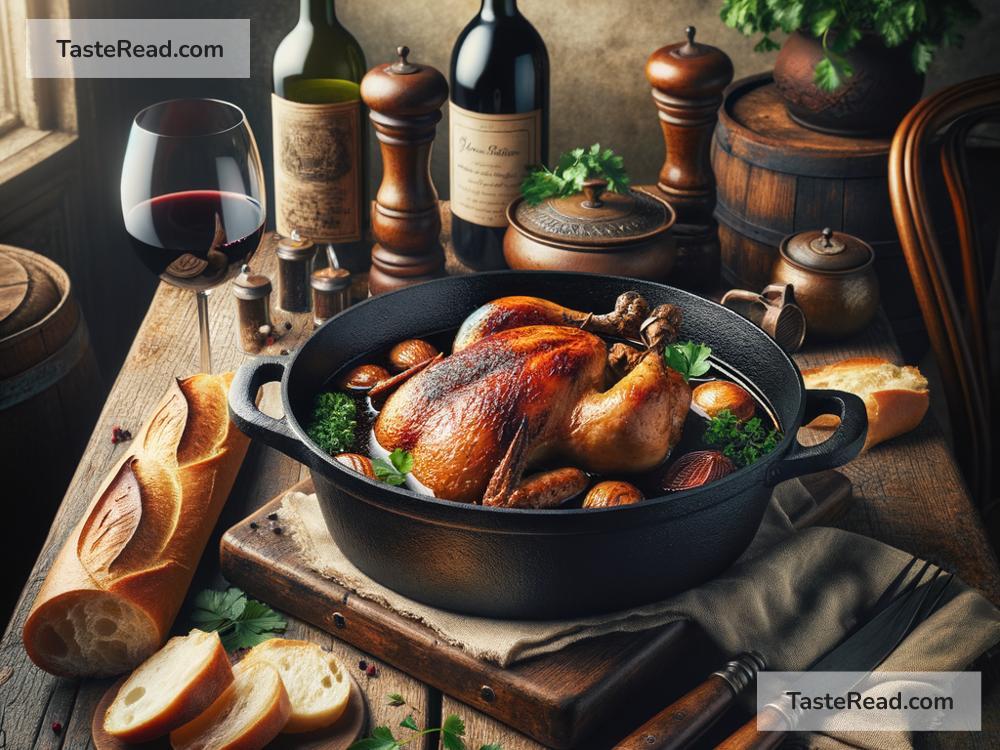Title: The Global Journey of French Coq au Vin: A Tale of Taste and Tradition
The story of how French Coq au Vin fluttered from the heart of France to grace dining tables worldwide is a fascinating journey of simple culinary tradition evolving into a global favorite. This classic French dish, which literally translates to “rooster in wine,” has a rich history and an even richer taste. The blend of tender chicken, luscious red wine, mushrooms, onions, and often bacon, creates a melody of flavors that has captivated food lovers everywhere. But how did this hearty, rustic meal become a symbol of fine dining across the globe? Let’s delve into the mouthwatering story of Coq au Vin’s worldwide acclaim.
Origins in Necessity
Though the exact origins of Coq au Vin are hazy, with some claiming its history goes back to the times of Julius Caesar, the dish is deeply rooted in practicality and resourcefulness. The concept is believed to have been born from the need to soften older, tougher birds into a delicious, edible meal. Slow cooking in wine along with herbs and vegetables was an ideal way to achieve this, turning a potentially inedible rooster into a tender, flavorful feast. This method of cooking, born out of necessity, showcases the French countryside’s culinary ingenuity.
A Local Delight Turns Global Sensation
For centuries, Coq au Vin remained a traditional French dish, largely confined to its rural origins. Its turning point came in the 20th century when it started gaining popularity beyond the French borders, thanks in part to the rise of global travel and influential figures in culinary arts like Julia Child. By introducing French cooking techniques and recipes, including Coq au Vin, to the rest of the world, chefs and food writers sparked an international interest in French cuisine. This once humble dish now found itself on restaurant menus worldwide and at the center of cooking shows and cookbooks, elevating its status from farmhouse kitchens to fine dining establishments.
The Universal Appeal of Coq au Vin
At the heart of Coq au Vin’s global success is its universal appeal. This dish, rich in flavor and history, transcends cultural boundaries. It represents a culinary tradition where food is more than sustenance; it is an art form, a way of life. The dish’s fundamental ingredients—chicken, wine, mushrooms, and onions—are readily available worldwide, making it accessible to home cooks and chefs alike. Moreover, its slow-cooked, hearty nature speaks a universal language of comfort food, making it a welcome addition to any table, during any season.
Variations Around the World
As Coq au Vin danced its way into kitchens globally, it inevitably embraced local flavors and ingredients. While the traditional recipe calls for Burgundy wine, chefs worldwide have adapted the dish using local wines and spirits, adding a unique twist that reflects regional tastes. For instance, in Italy, you might find a version cooked with rich Italian reds, while in North America, versions exist that use local varietals or even white wine for a lighter rendition known as “Coq au Vin Blanc.”
Preserving Tradition While Embracing Change
The global journey of Coq au Vin illuminates a broader culinary trend: the balancing act between preserving tradition and embracing innovation. While it’s essential to honor the origins and essence of traditional dishes, the evolution of such recipes also reflects the dynamic nature of food culture. Coq au Vin’s story encourages chefs and food enthusiasts to experiment and find joy in creating variations that pay homage to the original while incorporating local flavors and personal touches.
Conclusion
Coq au Vin’s rise from a French countryside staple to a global culinary favorite is more than a tale of a dish crossing borders; it’s a testament to the power of food in bringing people together, transcending cultures and languages. Its simple beginnings, combined with the rich tapestry of flavors it offers, showcases how food can evolve and adapt, finding a place in the hearts (and stomachs) of people around the world. Whether enjoyed in a cozy Parisian bistro or a bustling New York restaurant, Coq au Vin remains a beloved symbol of French culinary prowess and the universal language of delicious, comforting food. So, the next time you savor this exquisite dish, remember you’re partaking in a global tradition that has warmed hearts and filled bellies for centuries. Bon Appétit!


